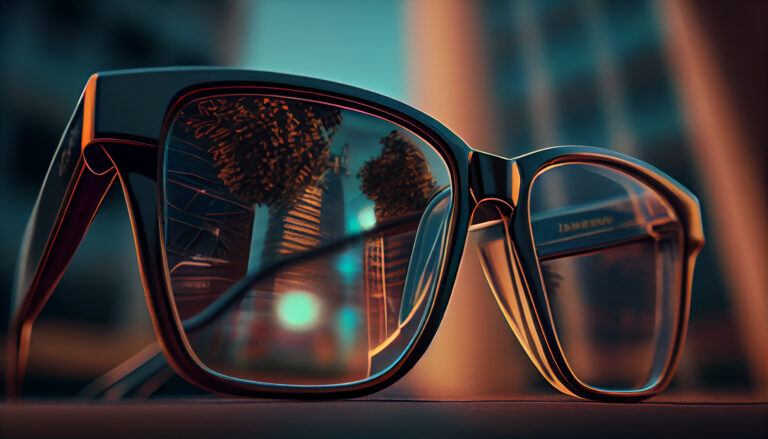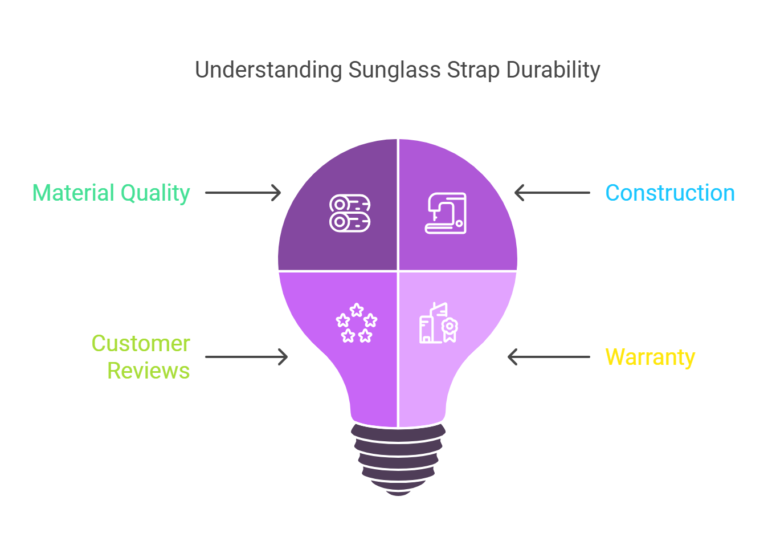Are NReal Light augmented reality glasses any good? Lets try
NReal Light augmented reality (AR) glasses are a breakthrough wearable device designed to blend digital content seamlessly with the real world. Unlike traditional virtual reality headsets that fully immerse you in a virtual environment, NReal Light glasses offer a mixed reality experience by overlaying digital images and information onto your natural surroundings.
This lightweight, stylish pair of smart glasses is built to be portable and user-friendly, making augmented reality more accessible for everyday consumers.
One of the standout features of NReal Light is its compact and sleek design. Unlike bulky AR or VR headsets, these glasses resemble oversized sunglasses, allowing users to wear them comfortably in various settings without attracting undue attention.
Despite their small size, NReal Light glasses pack impressive technology including high-resolution displays that create bright, vivid visuals directly in front of your eyes.
This enables users to watch videos, play games, or use AR apps while still being aware of their real-world environment.
The glasses connect to compatible smartphones or computers via a USB-C cable, leveraging the processing power of these devices to run AR applications smoothly.
This connection method keeps the glasses lightweight by offloading heavy computation tasks, yet still delivers a powerful AR experience.
The NReal Light also supports spatial tracking, meaning it can map and respond to your environment, allowing digital objects to appear anchored in the real world as you move.
Ideal for tech enthusiasts, professionals, and casual users curious about AR, NReal Light serves as a versatile tool for entertainment, productivity, and immersive experiences.
While not perfect and facing some software and app limitations, these glasses represent one of the most accessible and advanced AR devices currently available, pushing the boundaries of how we interact with digital content in everyday life.
Key Features of NReal Light AR Glasses
NReal Light AR glasses stand out in the growing augmented reality market by offering a blend of advanced technology, portability, and user-friendly design. These glasses deliver an impressive AR experience packed into a lightweight and stylish form factor, making them one of the most accessible AR devices available today.
One of the core features is the lightweight design. Weighing just around 88 grams, NReal Light glasses resemble a slightly chunky pair of sunglasses rather than a heavy VR headset.
This makes them comfortable for extended use, whether you’re streaming videos, playing AR games, or working on virtual screens.
The glasses feature dual 1080p displays, which project bright, clear images directly in front of your eyes. This high resolution provides vivid colors and sharp details, enhancing the immersive experience. The displays use waveguide technology to overlay digital content onto the real world without obstructing your natural view.
NReal Light includes 6 degrees of freedom (6DoF) spatial tracking enabled by two front-facing cameras and sensors. This tracking allows digital objects to stay anchored in your environment and respond naturally to your head and body movements, creating a truly interactive mixed reality experience.
Connectivity is another strong point. The glasses use a single USB-C cable to connect to compatible smartphones, tablets, or laptops.
This cable not only transmits video data but also powers the glasses, eliminating the need for a bulky battery pack and keeping the design slim.
The device supports Android smartphones with specific compatibility requirements and some Windows PCs, making it versatile for users already invested in these ecosystems.
It also offers compatibility with popular apps like YouTube VR, Netflix, and select AR applications, enabling users to enjoy entertainment, work, and gaming in a new way.
Lastly, NReal Light boasts an ergonomic and fashionable frame design. Its stylish appearance helps it blend into daily life, making it practical for use outside the home or office.
How Does the NReal Light Compare to Other AR Glasses?
When compared to other leading AR devices like Microsoft HoloLens, Magic Leap, and the newer Xreal Air (formerly NReal Air), the NReal Light offers a unique combination of affordability, portability, and user experience that sets it apart.
The Microsoft HoloLens 2 is often considered the gold standard for AR headsets, primarily targeting enterprise and professional markets. It offers advanced spatial mapping, hand tracking, and eye-tracking capabilities.
However, HoloLens is bulky, expensive (costing several thousand dollars), and designed mainly for industrial or development use rather than casual consumer applications. In contrast, NReal Light is much lighter, less expensive, and aimed at consumers looking for entertainment and productivity features.
Magic Leap 2, another competitor, similarly targets enterprise users with powerful hardware and advanced AR features. Magic Leap’s device provides high-quality visuals and spatial computing but comes with a hefty price tag and a less portable form factor.
Compared to Magic Leap, NReal Light’s main advantage is its sleek, sunglasses-like design and ease of use for everyday scenarios.
The Xreal Air is a direct successor and sibling device to NReal Light, featuring an even lighter and slimmer design. Both glasses use similar technology, but Xreal Air focuses more on portability and casual AR viewing, like watching movies or using a virtual desktop on the go. NReal Light, while slightly bulkier, offers more robust tracking capabilities, making it better suited for interactive AR apps and mixed reality experiences.
In terms of price, NReal Light falls in the mid-range AR market. It is more affordable than HoloLens and Magic Leap, making it accessible to tech enthusiasts and early adopters without breaking the bank. This affordability, combined with solid hardware specs, positions NReal Light as a strong entry point into consumer AR.
Another key difference is software support and ecosystem. Microsoft and Magic Leap benefit from extensive developer communities and specialized enterprise applications, while NReal Light currently relies heavily on smartphone app mirroring and a limited number of native AR apps.
This means that although NReal Light provides an excellent display and hardware foundation, it’s still growing in terms of the software ecosystem.
Display Quality and Visual Experience of NReal Light
One of the standout aspects of the NReal Light AR glasses is their impressive display quality, which plays a crucial role in delivering an immersive augmented reality experience. Unlike many bulky AR or VR headsets, the NReal Light offers a clear, bright, and sharp visual presentation that rivals larger, more expensive devices — all packed into a lightweight frame resembling sunglasses.
The NReal Light uses dual 1080p full-color micro-OLED displays, one for each eye. This setup produces a combined resolution that creates crisp images with vibrant colors and fine detail. The high resolution is critical because AR content is overlaid on the real world, so clear visuals help maintain realism and prevent eye strain.
These displays also provide a wide field of view (FOV), approximately 52 degrees, which is notably larger than many other consumer AR glasses. This wider FOV enhances immersion by allowing digital content to appear more naturally within your peripheral vision, making the experience feel less constrained.
The glasses employ waveguide optics technology, which directs light from the micro-displays into your eyes while keeping the lenses transparent to your natural surroundings. This technology enables you to see digital images seamlessly blended with the real world.
The result is a bright, vivid image with minimal distortion or glare, which is essential for usability in various lighting conditions.
Another important aspect is low latency and smooth motion tracking, ensuring that digital content stays anchored in your physical environment as you move your head. This responsiveness reduces motion sickness and contributes to a more comfortable, natural AR experience.
Overall, the display quality of the NReal Light offers a premium visual experience that can support activities like watching videos on a virtual big screen, using multiple floating virtual desktops, or interacting with 3D AR applications. Users consistently highlight the sharpness, brightness, and color fidelity as major strengths, making NReal Light one of the best choices for consumer AR glasses today.
Performance and Hardware Specs: What Powers NReal Light?
Behind the impressive visuals and sleek design of the NReal Light lies a carefully engineered hardware system designed to balance performance and portability.
Unlike standalone AR headsets that contain onboard computing hardware, the NReal Light functions as a tethered device, relying on an external source—such as a compatible smartphone or PC—to deliver processing power.
At the core of the NReal Light’s performance is its USB-C connection. This single cable handles both data transmission and power, allowing the glasses to stay lightweight and comfortable by offloading heavy processing to the connected device. This design eliminates the need for bulky batteries or processors within the glasses themselves, enhancing portability without compromising on visual quality.
To take full advantage of the hardware, NReal Light requires a compatible device with a powerful GPU and CPU, typically newer smartphones or PCs. Recommended devices often include high-end Android phones equipped with Qualcomm Snapdragon 845 processors or later versions. These devices provide the graphics power to render AR content smoothly and handle spatial tracking data from the glasses.
The glasses themselves are equipped with dual RGB cameras and multiple sensors. These cameras track the user’s environment and head movement with six degrees of freedom (6DoF), allowing for accurate spatial positioning of virtual objects.
This tracking system is essential for a convincing AR experience where digital elements appear stable and interactive within the real world.
In terms of build quality, the NReal Light features an aluminum and plastic frame designed for durability while maintaining a lightweight profile (about 88 grams). The glasses include adjustable nose pads and temple tips to ensure a comfortable fit during extended use.
The glasses also support low-latency video streaming and high frame rates, which reduce motion blur and lag. This technical capability is especially important for gaming and interactive applications where responsiveness affects user experience directly.
Software-wise, the device uses the Nebula launcher, an Android-based platform optimized for AR content. This launcher manages app launching, spatial computing, and user interface elements, providing a user-friendly environment for both casual and professional users.
Compatibility: Which Devices Work with NReal Light?
One of the key factors determining the usability of the NReal Light AR glasses is device compatibility. Unlike standalone AR headsets, the NReal Light requires a compatible external device—typically a smartphone or PC—to function, as it relies on that device’s processing power and graphics capabilities to deliver its mixed reality experience.
Currently, the NReal Light is designed primarily for modern Android smartphones with USB-C ports and DisplayPort Alternate Mode support. This includes popular models such as the Samsung Galaxy S20, S21, S22 series, Google Pixel 4 and later, and OnePlus 8 and newer phones.
These devices generally feature high-performance processors (such as Qualcomm Snapdragon 845 or newer) and GPUs capable of rendering the AR content smoothly. The glasses also require the phone to run Android 8.1 or higher to ensure software compatibility.
In addition to smartphones, NReal Light can connect to Windows PCs and laptops via USB-C, turning them into extended displays or AR environments.
This expands the glasses’ versatility for productivity use cases, such as multiple virtual desktops, immersive presentations, or gaming. However, PC compatibility depends on hardware and software configurations supporting USB-C video output.
It’s important to note that iOS devices (iPhones and iPads) are currently not supported due to system restrictions and the lack of compatible drivers and software for Apple’s ecosystem. This limits NReal Light’s compatibility mostly to Android users and PC users at present.
User Experience: Comfort, Design, and Build Quality
Comfort and design are crucial for AR glasses, as users often wear them for extended periods. The NReal Light impresses in this area by mimicking the form factor of traditional sunglasses rather than bulky VR headsets. Weighing around 88 grams, they are lightweight and comfortable, which helps reduce fatigue during longer sessions.
The glasses feature an aluminum frame combined with high-quality plastics, balancing durability with a sleek aesthetic. Adjustable nose pads and flexible temple arms help users find a secure yet comfortable fit, accommodating different face shapes and sizes.
The design also supports the use of prescription lens inserts, making the glasses more accessible to users who wear glasses.
One notable aspect of the NReal Light is its discreet, stylish appearance. Unlike many AR headsets that appear futuristic or obtrusive, NReal Light offers a subtle look that fits well in casual and professional settings alike.
However, some users report that wearing the glasses for hours can cause mild eye strain, particularly during intensive use such as gaming or watching videos.
This is not uncommon for AR devices, given the close proximity of displays to the eyes. Proper breaks and adjusting the fit can help mitigate this issue.
Software and App Support for NReal Light AR Glasses
The user experience of NReal Light is significantly shaped by its software environment. The glasses run on the Nebula launcher, an Android-based operating system tailored specifically for AR content. Nebula serves as the interface through which users access apps, manage virtual desktops, and control spatial computing features.
Currently, the app ecosystem for NReal Light is growing but somewhat limited compared to mainstream mobile app stores. Users can mirror their smartphone screens to the glasses, enabling popular apps like YouTube, Netflix, or gaming apps to display on a massive virtual screen. This makes NReal Light great for media consumption and casual gaming.
For more immersive AR experiences, Nebula supports dedicated apps for 3D visualization, mixed reality gaming, productivity tools, and virtual meetings. Developers are actively working to expand this catalog, which will enhance the glasses’ capabilities over time.
However, the limited number of fully optimized AR apps is a notable drawback at this stage. Users looking for extensive AR experiences may find the current software options a bit restrictive. This is a common challenge for consumer AR devices in their early market phases.
NReal frequently updates Nebula to improve stability, add features, and increase app compatibility. The company also encourages developers to create content specifically for the NReal ecosystem, promising a more robust app library in the future.
Real-World Use Cases: What Can You Do with NReal Light?
The NReal Light AR glasses open up a wide range of practical and entertainment possibilities by blending digital content with the physical world. While the technology is still maturing, here are some of the key real-world use cases that highlight what you can do with these glasses today:
-
Media Consumption
One of the most popular applications for NReal Light is watching videos, movies, and streaming content on a giant virtual screen. By connecting the glasses to your smartphone or PC, you can enjoy a private, immersive viewing experience equivalent to watching on a 100-inch display—without needing a physical projector or TV. Whether you’re on a plane, commuting, or relaxing at home, this capability makes media consumption more flexible and personal. -
Productivity and Multitasking
NReal Light transforms your workspace by creating virtual monitors that float in your field of view. This means you can have multiple windows open simultaneously, extending your laptop or desktop setup without additional hardware. Imagine working on a spreadsheet while referencing a document on a second virtual screen, all while staying aware of your real environment. This is particularly useful for professionals who travel or need portable multi-display setups. -
Augmented Reality Apps and Games
While the app ecosystem is still growing, NReal Light supports AR and mixed reality apps that overlay 3D objects and information onto your surroundings. This enables new ways to interact with digital content for gaming, education, or design. For example, you can visualize 3D models in real space, play location-based AR games, or participate in immersive training simulations. -
Virtual Meetings and Collaboration
As remote work becomes more common, NReal Light offers potential for enhanced virtual meetings by integrating AR with conferencing apps. You can view virtual avatars or shared documents within your environment, making collaboration feel more natural and engaging than traditional video calls. -
Navigation and Real-Time Information
The glasses can display navigation prompts, notifications, or contextual information while you move around, which is valuable for tasks such as walking tours, shopping, or warehouse work. Having hands-free access to relevant data improves efficiency and safety.
Are NReal Light Glasses Worth It?
Pros:
-
Lightweight and Comfortable Design: NReal Light is significantly more wearable than many bulky AR/VR headsets, making it suitable for extended use.
-
High-Quality Display: The glasses deliver sharp visuals with a wide field of view and good brightness, ideal for media and AR experiences.
-
Portable Mixed Reality Experience: Being able to connect to smartphones and PCs provides great flexibility and makes it accessible to a wide range of users.
-
Multi-Use Functionality: From gaming and streaming to productivity and AR apps, NReal Light covers a broad spectrum of use cases.
-
Competitive Price Point: Compared to enterprise AR devices like Microsoft HoloLens or Magic Leap, NReal Light offers an affordable entry into consumer AR.
-
Developer Support: Active updates and a growing app ecosystem mean the device is improving over time.
Cons:
-
Limited App Ecosystem: The AR software library is still in early stages, restricting the range of fully immersive experiences available.
-
Compatibility Restrictions: Currently, the glasses mainly support newer Android devices and Windows PCs, excluding iOS users and older hardware.
-
Battery Life and Connectivity: Since the glasses rely on a connected device for power and processing, battery life is limited by the host device, and wired connections may reduce mobility.
-
Eye Strain: Extended use can cause discomfort or eye fatigue, a common issue in AR but worth noting for potential buyers.
-
Mixed Reality Limitations: While the glasses excel at media and productivity, the “mixed reality” experiences are not yet as seamless or advanced as some competitors.
Final Verdict
The NReal Light AR glasses represent a significant step forward in making augmented reality accessible and practical for everyday consumers. They strike a thoughtful balance between design, display quality, and affordability, making them one of the best entry-level AR glasses currently available.
For users who want to experiment with AR, enjoy immersive media on the go, or boost productivity with virtual monitors, NReal Light offers compelling features and a comfortable form factor. However, if you’re looking for a fully developed, app-rich mixed reality ecosystem or require compatibility with iOS devices, you may find the experience somewhat limited.
Ultimately, the glasses are well-suited for early adopters, tech enthusiasts, and Android users who want to explore AR without investing in high-cost enterprise hardware.
As the software ecosystem matures and more apps become available, NReal Light’s value will only increase.
If you’re curious about augmented reality and want a versatile device for media, work, and light AR applications, NReal Light is worth considering now.
But if you prefer a fully polished mixed reality experience with extensive app support, waiting for future iterations or competitors might be advisable.






